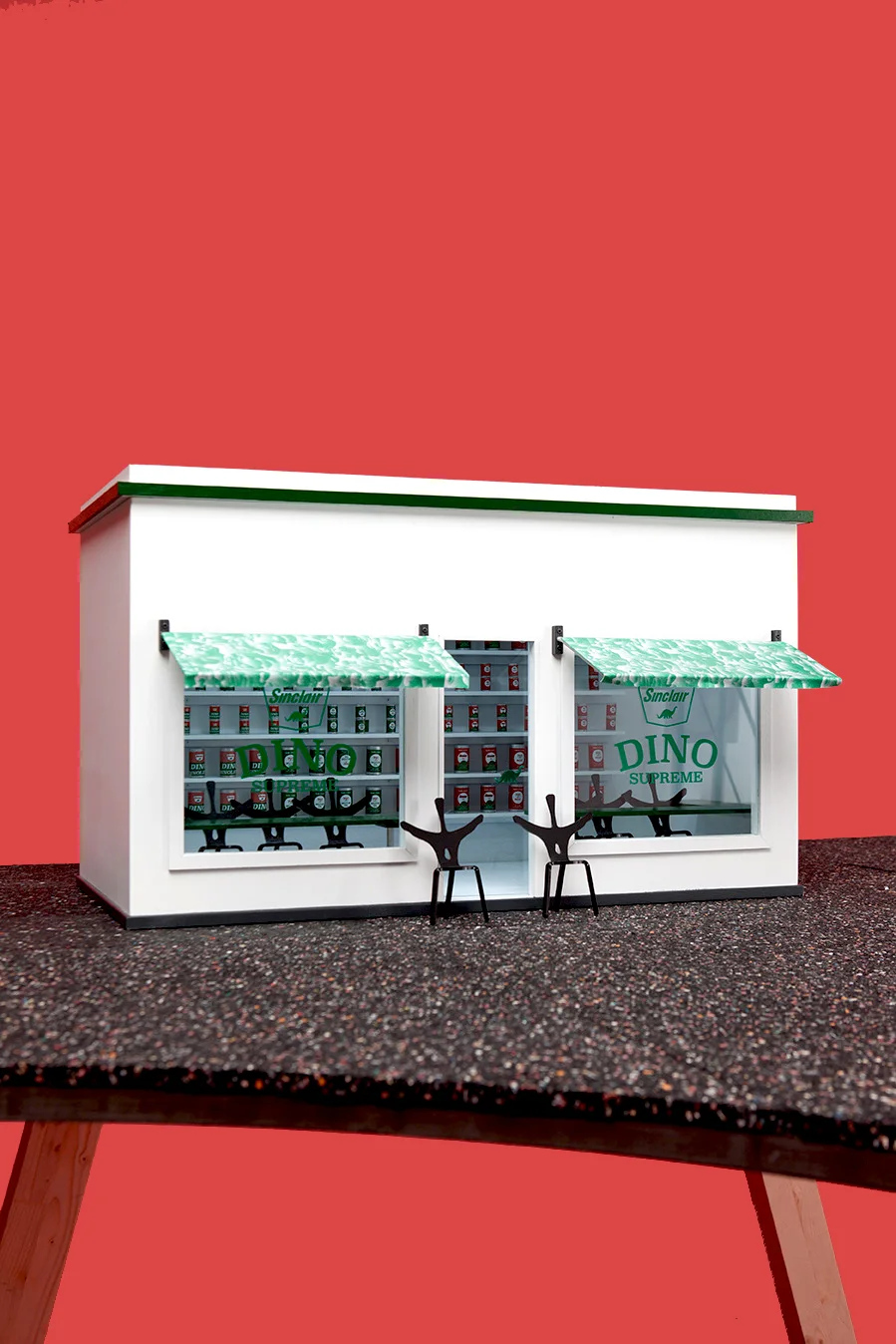EN
Emma Pflieger — Postmodern Paleontology
Postmodern Paleontology picks at the bones of the dinosaurs to demonstrate the politicised nature of how we know the past. The unknowableness of pre-history makes it available for symbolic manipulation in the construction of ideological and political meaning by corporations. Mixing up real and imaginary histories, three dioramas depict three plausible satirical scenarios: Sue, the best preserved T-Rex specimen ever found is owned by McDonalds and Disney. In our alternate timeline Alberta’s Dinosaur Park presents the newly discovered Macdosaur and Disnosaur. At the Chicago World's Fair of 1933–1934 the Sinclair Oil Corporation sponsored a exhibit based on a now discredited correlation between petrol deposits and dinosaurs. We imagine excavated dinosaurs being reburied for gas stations to provide a luxury fuel for Flintstones cars. The Conservative Christian Discovery Institute lobbies to teach creationism alongside evolution. In 1997 US politician Sarah Palin claimed that dinosaurs and humans walked the earth at the same time. We imagine new universities set up attracting tourists, students and hunters to search for monsters in Mokélé-mbembélake in Congo and Loch Ness in Scotland and 0ind fossils to raise money at auction to further conservative Christian public policy.
FR
Emma Pflieger — Postmodern Paleontology
Postmodern Paleontology porte un éclairage via le design et la scénographie sur une question politique en la manière dont une forme, le dinosaure, est interprété diversement pour faire valoir des idéologies opposées. Le propos des trois dioramas est de montrer comment la forme du dinosaure peut être polysémique, en véhiculant à la fois des discours mirifiques, politique etreligieux. La dimension ludique du dinosaure dissimule une approche politique et évoque l’idée du designer engagé qui interroge et spécule.
Postmodern Paleontology, 2016










